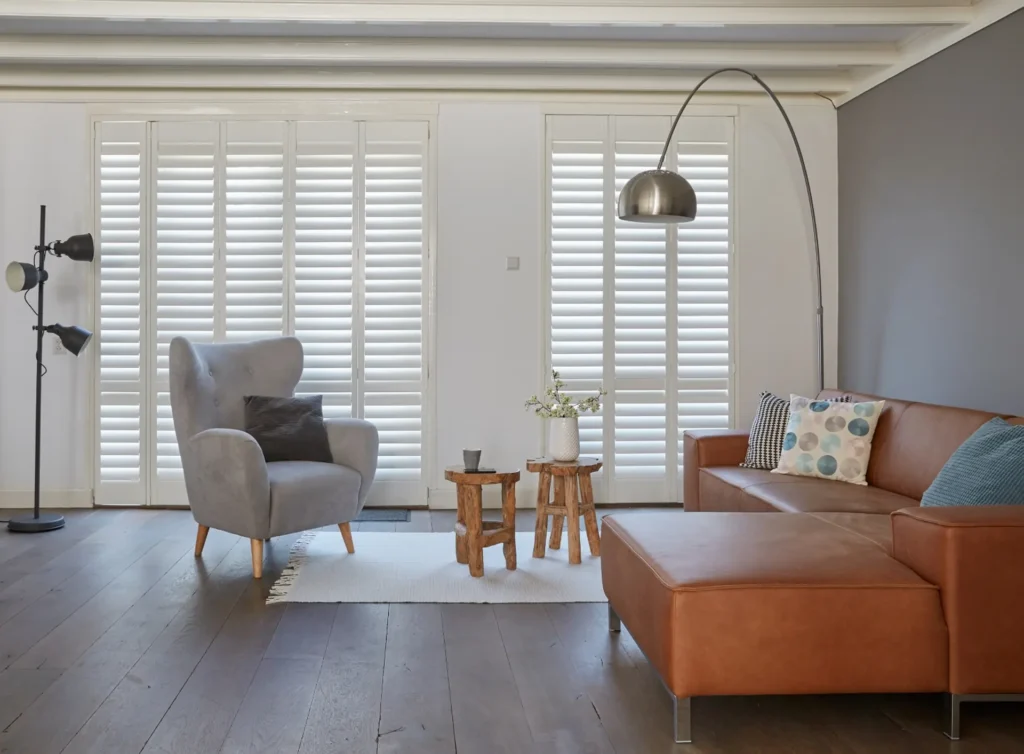Window coverings may seem like a small detail, but they can make a big impact in a rental property. The right blinds or shades can enhance the look of your space, improve privacy and comfort for tenants, and even reduce long-term maintenance costs. Whether you’re outfitting a single unit or managing multiple properties, smart choices in window coverings can protect your investment. In this blog, we’ll explore what to consider to help you make the best decision.

1. Consider Durability and Ease of Maintenance
When selecting window coverings for a rental property, durability and ease of maintenance should be top priorities. Renters come and go, and wear and tear is inevitable, especially in homes with kids or pets. Skip the delicate fabrics and opt for materials that can handle everyday use without staining, warping, or tearing. Faux wood blinds offer the classic look of real wood but resist moisture and damage. Vinyl roller shades and aluminum blinds are also great low-maintenance options that wipe clean in seconds. Choosing sturdy, easy-to-clean coverings will save you time, money, and headaches between tenants while keeping your space looking fresh.
2. Stick to Neutral Styles and Colors
When outfitting a rental property, sticking to neutral styles and colors for window coverings is a smart move. Shades of white, beige, gray, or soft taupe work with nearly any wall color or furniture style, which can make your space more universally appealing. Simple, clean-lined blinds or shades also help renters visualize the home as their own, which can speed up the rental process. Bold patterns or trendy colors might clash with a tenant’s décor, but neutrals offer a timeless look that feels fresh and modern. Creating a blank canvas makes it easier for renters to settle in and stay longer.
3. Match Window Coverings to Room Function
Choosing the right window coverings for each room in a rental property can boost both comfort and functionality. Bedrooms benefit from blackout curtains or shades that block out light and help regulate temperature—something tenants will appreciate for a good night’s sleep. In bathrooms and kitchens, moisture-resistant materials like vinyl or faux wood are essential to prevent warping or mildew. For large sliding doors in living or dining areas, vertical blinds or wide panel drapes are a practical choice because they’re easy to operate and provide flexible light control. Matching window treatments to each room’s specific needs shows thoughtfulness and adds value.
4. Balance Cost and Quality
When choosing window coverings for a rental property, it’s important to strike the right balance between cost and quality. Opt for materials that are affordable yet durable that can handle daily use and tenant turnover. For luxury rentals or long-term tenants, it might be worth investing in higher-end options like plantation shutters or custom shades to boost appeal and value. Consider the long-term costs of replacement and maintenance; spending a little more upfront can save money over time by reducing the need for frequent repairs. Smart choices now can lead to fewer headaches and expenses later.
5. Ensure Easy Operation and Safety

When selecting window coverings for a rental property, ease of use and safety should be top priorities. Cordless blinds and shades are sleek and modern, and they eliminate the risk of cord-related accidents. This makes them a safer choice for families with children and pets. Smooth-operating mechanisms reduce wear and tear, helping prevent maintenance issues and tenant frustration. For added value, consider ADA-compliant window coverings that ensure accessibility for all renters. These thoughtful features can improve tenant satisfaction, reduce liability concerns, and make your property more appealing to a wider range of renters.
6. Think About Light and Privacy Control
When choosing window coverings for a rental, think about how they’ll manage both light and privacy—two things renters care about most. Sheer materials work well in living areas where natural light is welcome, while bedrooms and bathrooms may need opaque or blackout options for privacy and comfort. Adjustable blinds or layered treatments (like pairing sheer curtains with heavier drapes) allow tenants to customize their space throughout the day. For street-facing units or shared walls, privacy becomes even more important, making the right window coverings a smart investment that can enhance renter satisfaction and boost your property’s appeal.
7. Check HOA or Lease Regulations
Before installing window coverings in a rental property, it’s important to review any HOA guidelines or lease agreement terms. Homeowners associations often have rules about what’s visible from the outside (like uniform colors, curtain linings, or blind styles) that could limit your choices. Likewise, be clear on who’s responsible for window treatments in the lease: are tenants allowed to make changes, or is that your responsibility as the landlord? Knowing these details upfront can help you avoid violations, maintain curb appeal, and ensure a smooth rental experience for both you and your tenants. Always prioritize function and compliance.
Contact Lloyd’s Blinds for Assistance
Choosing the right window coverings for your rental property improves aesthetics, protects your investment, and keeps tenants happy. At Lloyd’s Blinds, we specialize in affordable, durable, and low-maintenance window treatment solutions that are perfect for any rental unit. Whether you manage a single-family home or a multi-unit complex, our team will help you find stylish options that hold up to everyday use, meet lease or HOA requirements, and appeal to a wide range of renters. Contact us at Lloyd’s Blinds today for expert guidance and custom recommendations that make your rental property stand out.

